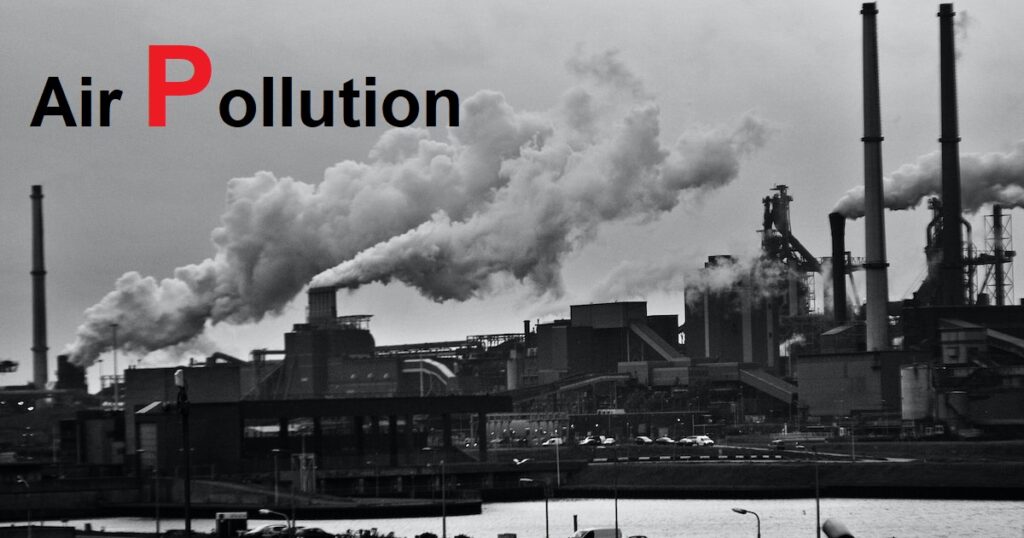Air pollution is a serious concern worldwide, affecting human health and the environment. However, it is not just humans that are affected by air pollution, but also wildlife. Wildlife plays a vital role in the ecosystem, and the impact of air pollution on wildlife cannot be overlooked. This article will discuss the impact of air pollution on wildlife, including the various forms of air pollution and the species most affected.
Introduction
Air pollution is a significant environmental issue that poses a threat to both human and animal life. Human activities such as burning fossil fuels, industrialization, and transportation have increased air pollution levels. Air pollution can have severe consequences on wildlife, causing various health problems that can lead to population decline and extinction. In this article, we will explore the impact of air pollution on wildlife, including the different types of air pollution and how they affect different species.
Types of Air Pollution
Air pollution comes in different forms and can be classified into primary and secondary pollutants. Primary pollutants are directly emitted into the atmosphere from natural or human-made sources. Examples of primary pollutants include nitrogen oxides, sulfur dioxide, carbon monoxide, and particulate matter. Secondary pollutants are formed through chemical reactions between primary pollutants and other substances in the atmosphere.

Effects of Air Pollution on Wildlife
Air pollution has various adverse effects on wildlife. Some of these effects include:
Respiratory problems
Wildlife exposed to air pollution can experience respiratory problems, which can lead to death in extreme cases. This is especially true for animals that have a higher respiratory rate, such as birds and small mammals. Respiratory problems are caused by inhaling harmful chemicals and particulate matter.
Reproductive problems
Air pollution can also affect the reproductive health of wildlife. Exposure to certain pollutants can lead to reduced fertility, birth defects, and even the death of offspring. Some pollutants can also disrupt the endocrine system, leading to hormonal imbalances and reproductive disorders.
Neurological problems
Air pollution can also affect the neurological health of wildlife. Exposure to some pollutants can lead to impaired cognitive function, abnormal behavior, and even death. This is especially true for aquatic animals, which are more vulnerable to pollutants such as mercury and lead.
Habitat destruction
Air pollution can also lead to habitat destruction, making it difficult for wildlife to survive. Acid rain, for example, can destroy forests and aquatic ecosystems, leading to the loss of habitat for various species.
Species Most Affected by Air Pollution
Different species are affected differently by air pollution. Here are some of the most affected species:
Birds
Birds are particularly vulnerable to air pollution due to their high respiratory rate. Air pollution can cause respiratory problems, making it difficult for birds to breathe. It can also affect their reproductive health, leading to reduced fertility and birth defects.
Marine Life
Marine life is also severely affected by air pollution. Pollutants such as mercury and lead can accumulate in the tissues of fish and other marine organisms, leading to neurological problems and even death.
Insects
Air pollution can also affect insects, such as bees and butterflies, which are essential for pollination. Pollutants can disrupt their reproductive systems, making it difficult for them to reproduce.
Mitigation Measures
The impact of air pollution on wildlife can be reduced through various mitigation measures. Here are some of the measures that can be taken:
Reducing Emissions
Reducing emissions of air pollutants can significantly reduce the impact of air pollution on wildlife. This can be achieved by implementing stricter regulations on industries and transportation and promoting the use of cleaner energy sources.
Habitat Restoration
Restoring degraded habitats can help in mitigating the impact of air pollution on wildlife. This can be achieved by planting trees, restoring wetlands, and reducing erosion.
Education and Awareness
Educating people about the impact of air pollution on wildlife can help in reducing pollution levels. This can be achieved through campaigns, workshops, and public awareness programs.

Conclusion
Air pollution is a severe threat to wildlife, causing respiratory problems, reproductive issues, neurological problems, and habitat destruction. Different species are affected differently by air pollution, and mitigation measures such as reducing emissions, restoring degraded habitats, and educating people can help in reducing the impact of air pollution on wildlife.
FAQs
- How does air pollution affect marine life?
- Air pollution can affect marine life by polluting the water bodies, which can lead to the accumulation of harmful chemicals in the tissues of marine organisms, causing neurological problems and even death.
- Which species are most affected by air pollution?
- Birds, marine life, and insects such as bees and butterflies are among the most affected species by air pollution.
- Can air pollution lead to the extinction of species?
- Yes, air pollution can lead to the extinction of species by causing health problems that can lead to population decline.
- What can individuals do to reduce air pollution levels?
- Individuals can reduce air pollution levels by using public transportation, promoting clean energy sources, and reducing the use of single-use plastics.
- What are some long-term effects of air pollution on wildlife?
- Long-term effects of air pollution on wildlife can include population decline, extinction of species, and changes in the ecosystem.
